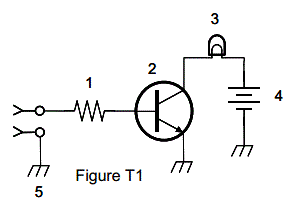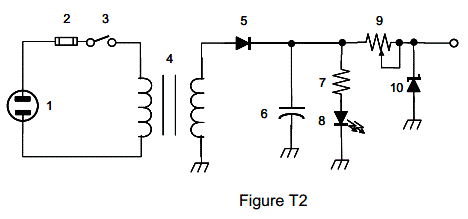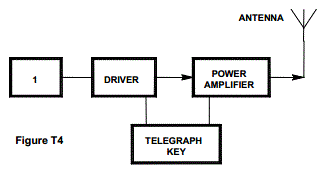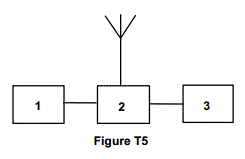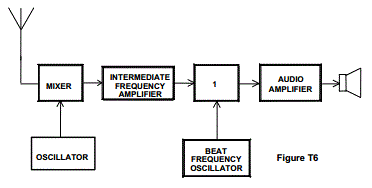Ham Technician License Practice Quiz
• Percentage: 0%; Correct: 0; Total: 0 of 35
T0A10: What can happen if a lead-acid storage battery is charged or discharged too quickly?
The battery could overheat and give off flammable gas or explode
The voltage can become reversed
The 'memory effect' will reduce the capacity of the battery
All of these choices are correct
T0B05: What is the purpose of a gin pole?
To temporarily replace guy wires
To be used in place of a safety harness
To lift tower sections or antennas
To provide a temporary ground
T0C08: Which of the following actions might amateur operators take to prevent exposure to RF radiation in excess of FCC-supplied limits?
Relocate antennas
Relocate the transmitter
Increase the duty cycle
All of these choices are correct
T1A09: Who selects a Frequency Coordinator?
The FCC Office of Spectrum Management and Coordination Policy
The local chapter of the Office of National Council of Independent Frequency Coordinators
Amateur operators in a local or regional area whose stations are eligible to be auxiliary or repeater stations
FCC Regional Field Office
T1B08: What do the FCC rules mean when an amateur frequency band is said to be available on a secondary basis?
Secondary users of a frequency have equal rights to operate
Amateurs are only allowed to use the frequency at night
Amateurs may not cause harmful interference to primary users
Secondary users are not allowed on amateur bands
T1C09: What is the grace period following the expiration of an amateur license within which the license may be renewed?
Two years
Three years
Five years
Ten years
T1D01: With which countries are FCC-licensed amateur stations prohibited from exchanging communications?
Any country whose administration has notified the ITU that it objects to such communications
Any country whose administration has notified the United Nations that it objects to such communications
Any country engaged in hostilities with another country
Any country in violation of the War Powers Act of 1934
T1E03: Who must designate the station control operator?
The station licensee
The FCC
The frequency coordinator
The ITU
T1F08: When may a Technician Class licensee be the control operator of a station operating in an exclusive Extra Class operator segment of the amateur bands?
Never
On Armed Forces Day
As part of a multi-operator contest team
When using a club station whose trustee is an Extra Class operator licensee
T2A03: What is a common repeater frequency offset in the 70 cm band?
Plus or minus 5 MHz
Plus or minus 600 kHz
Minus 600 kHz
Plus 600 kHz
T2B02: What is the term used to describe the use of a sub-audible tone transmitted with normal voice audio to open the squelch of a receiver?
Carrier squelch
Tone burst
DTMF
CTCSS
T2C09: When may an amateur station use any means of radio communications at its disposal for essential communications in connection with immediate safety of human life and protection of property?
Only when FEMA authorizes it by declaring an emergency
When normal communications systems are not available
Only when RACES authorizes it by declaring an emergency
Only when authorized by the local MARS program director
T3A11: Which part of the atmosphere enables the propagation of radio signals around the world?
The stratosphere
The troposphere
The ionosphere
The magnetosphere
T3B10: What frequency range is referred to as HF?
300 to 3000 MHz
30 to 300 MHz
3 to 30 MHz
300 to 3000 kHz
T3C03: What is a characteristic of VHF signals received via auroral reflection?
Signals from distances of 10,000 or more miles are common
The signals exhibit rapid fluctuations of strength and often sound distorted
These types of signals occur only during winter nighttime hours
These types of signals are generally strongest when your antenna is aimed to the south (for stations in the Northern Hemisphere)
T4A03: Which is a good reason to use a regulated power supply for communications equipment?
It prevents voltage fluctuations from reaching sensitive circuits
A regulated power supply has FCC approval
A fuse or circuit breaker regulates the power
Power consumption is independent of load
T4B09: Which of the following is an appropriate receive filter to select in order to minimize noise and interference for SSB reception?
500 Hz
1000 Hz
2400 Hz
5000 Hz
T5A01: Electrical current is measured in which of the following units?
Volts
Watts
Ohms
Amperes
T5B06: If an ammeter calibrated in amperes is used to measure a 3000-milliampere current, what reading would it show?
0.003 amperes
0.3 amperes
3 amperes
3,000,000 amperes
T5C10: How much power is being used in a circuit when the applied voltage is 12 volts DC and the current is 2.5 amperes?
4.8 watts
30 watts
14.5 watts
0.208 watts
T5D12: What is the voltage across a 10-ohm resistor if a current of 2 amperes flows through it?
8 volts
0.2 volts
12 volts
20 volts
T6A07: What electrical component is usually composed of a coil of wire?
Switch
Capacitor
Diode
Inductor
T6B01: What class of electronic components is capable of using a voltage or current signal to control current flow?
Capacitors
Inductors
Resistors
Transistors
T6C09: What is component 4 in figure T2?
Variable inductor
Double-pole switch
Potentiometer
Transformer
T6D08: Which of the following is used together with an inductor to make a tuned circuit?
Resistor
Zener diode
Potentiometer
Capacitor
T7A11: Which of the following circuits demodulates FM signals?
Limiter
Discriminator
Product detector
Phase inverter
T7B12: What does the acronym "BER" mean when applied to digital communications systems?
Baud Enhancement Recovery
Baud Error Removal
Bit Error Rate
Bit Exponent Resource
T7C10: Why should the outer jacket of coaxial cable be resistant to ultraviolet light?
Ultraviolet resistant jackets prevent harmonic radiation
Ultraviolet light can increase losses in the cable's jacket
Ultraviolet and RF signals can mix together, causing interference
Ultraviolet light can damage the jacket and allow water to enter the cable
T7D10: What is probably happening when an ohmmeter, connected across a circuit, initially indicates a low resistance and then shows increasing resistance with time?
The ohmmeter is defective
The circuit contains a large capacitor
The circuit contains a large inductor
The circuit is a relaxation oscillator
T8A08: What is the approximate bandwidth of a single sideband voice signal?
1 kHz
3 kHz
6 kHz
15 kHz
T8B06: What can be used to determine the time period during which an amateur satellite or space station can be accessed?
A GPS receiver
A field strength meter
A telescope
A satellite tracking program
T8C11: What name is given to an amateur radio station that is used to connect other amateur stations to the Internet?
A gateway
A repeater
A digipeater
A beacon
T8D06: What does the abbreviation PSK mean?
Pulse Shift Keying
Phase Shift Keying
Packet Short Keying
Phased Slide Keying
T9A09: What is the approximate length, in inches, of a 6 meter 1/2-wavelength wire dipole antenna?
6
50
112
236
T9B08: Why should coax connectors exposed to the weather be sealed against water intrusion?
To prevent an increase in feedline loss
To prevent interference to telephones
To keep the jacket from becoming loose
All of these choices are correct
